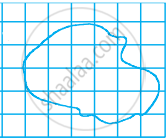Advertisements
Advertisements
प्रश्न
Length of a rectangle is 30 m and its breadth is 20 m. Find the increase in its area if its length is increased by 10 m and its breadth is doubled.
उत्तर
Length of a rectangle (l) = 30 m,
Breadth of the rectangle (b) = 20 m
Area of rectangle = l x b
= 30 x 20 = 600 m2
Since, the length its increased by 10 m and breadth is doubled
∴New length (l) = (30 + 10) m = 40 m
and new breadth = (20 x 2) m = 40 m
∴New area = l x b = 40 x 40 m2 = 1600 m2
Hence, the increase in the area = (1600 – 600) m2
= 1000 m2
APPEARS IN
संबंधित प्रश्न
In below fig., PSDA is a parallelogram in which PQ = QR = RS and AP || BQ || CR. Prove
that ar (Δ PQE) = ar (ΔCFD).

PQRS is a rectangle inscribed in a quadrant of a circle of radius 13 cm. A is any point on PQ. If PS = 5 cm, then find ar (ΔRAS)
The sides of a rectangular park are in the ratio 4 : 3. If its area is 1728 m2, find
(i) its perimeter
(ii) cost of fencing it at the rate of ₹40 per meter.
Find the area of a rectangle whose length = 15 cm breadth = 6.4 cm
Each side of a square is 7 m. If its each side be increased by 3 m, what will be the increase in its area.
Look at a 10 rupee note. Is its area more than hundred square cm?
Each line gives a story. You have to choose the question which makes the best story problem. The first one is already marked.
- 352 children from a school went on a camping trip. Each tent had a group of 4 children.
a) How many children did each tent have? b) How many tents do they need? c) How many children in all are in the school?
Find the area of the following figure by counting squares:

Find the area of the following figure by counting squares:

Find the area of the following figure by counting squares:

